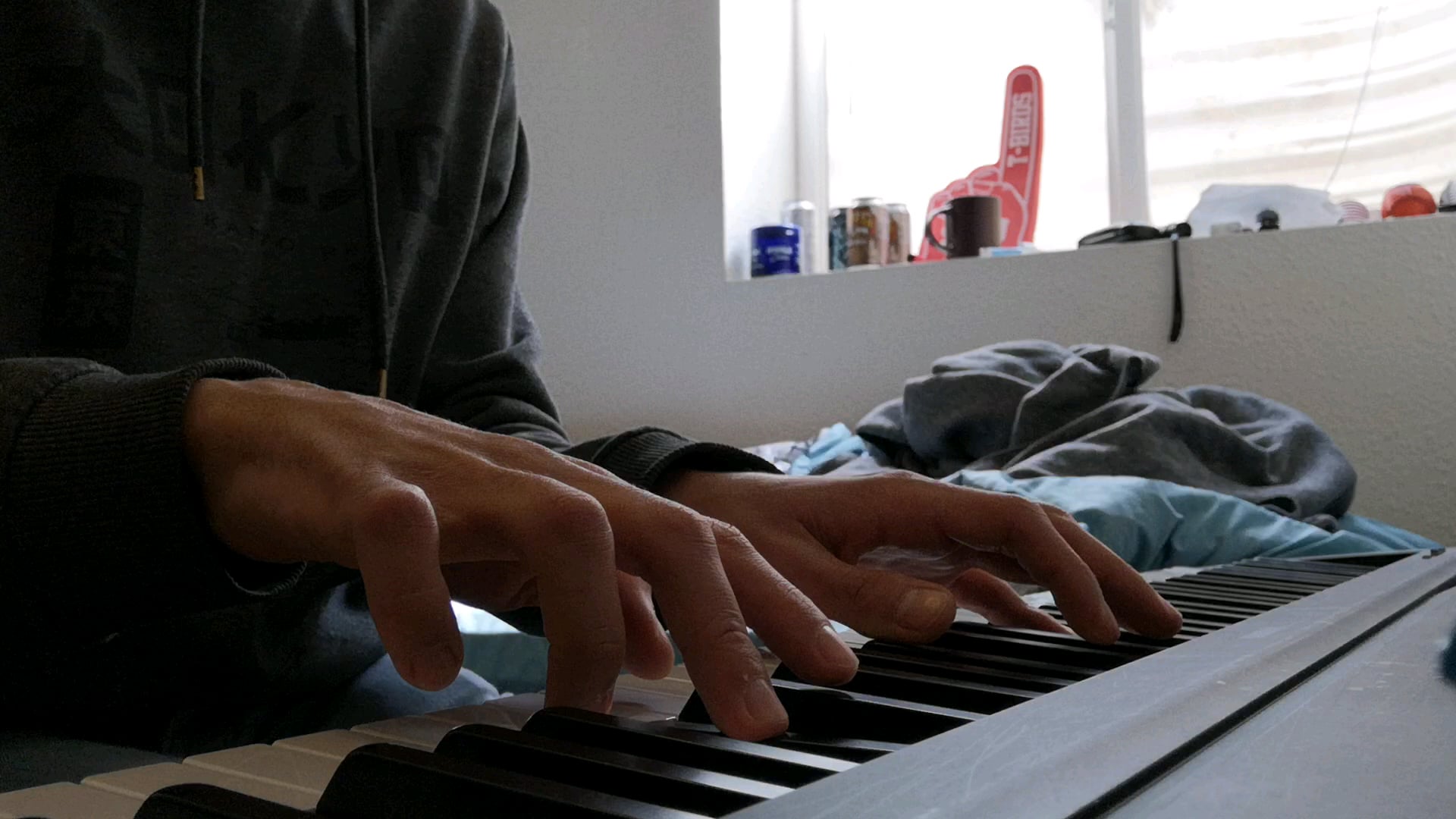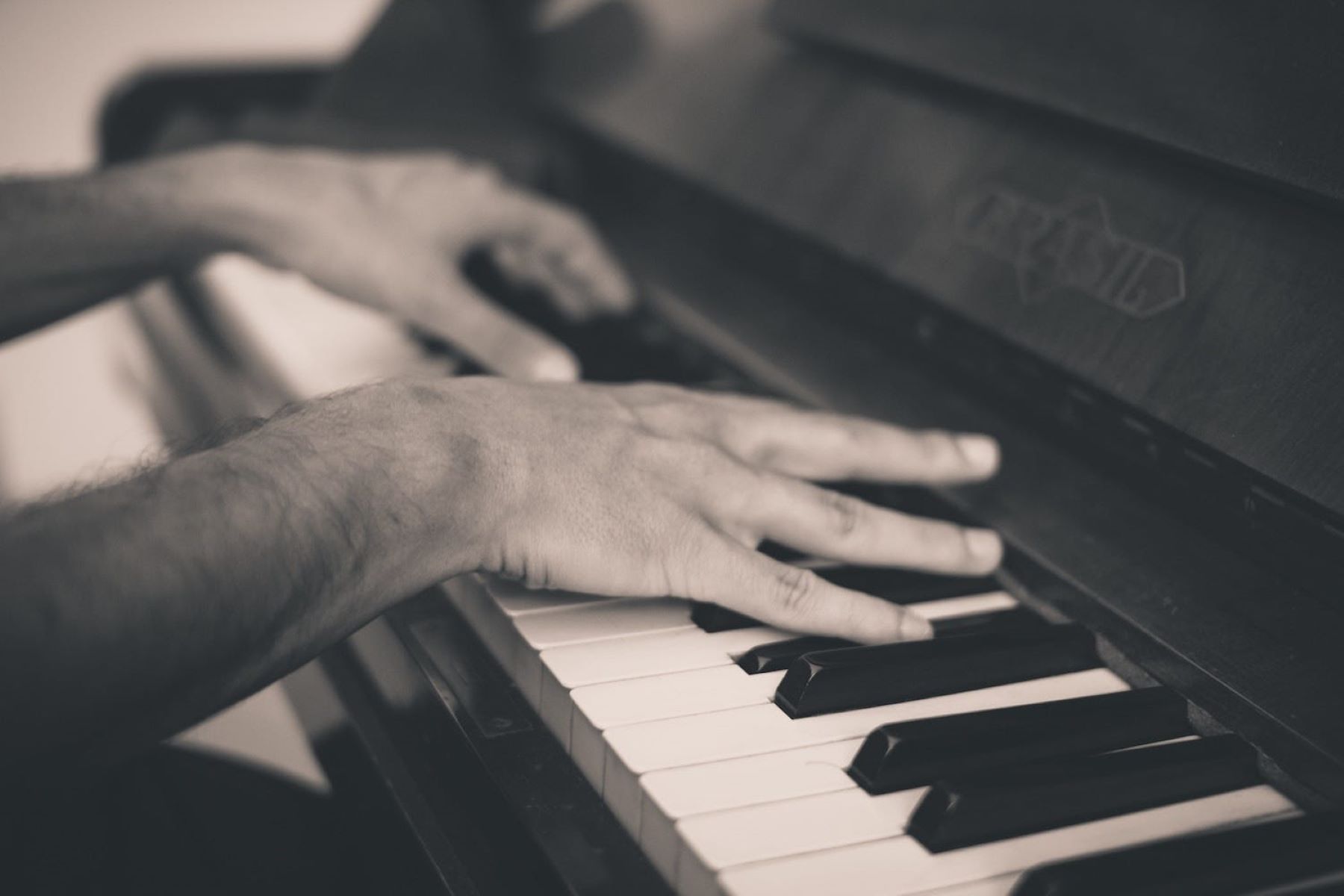Home>Instruments>Piano>How To Improvise On Piano


Piano
How To Improvise On Piano
Published: February 10, 2024
Learn how to improvise on piano with our expert tips and techniques. Enhance your piano skills and express your creativity through improvisation.
(Many of the links in this article redirect to a specific reviewed product. Your purchase of these products through affiliate links helps to generate commission for AudioLover.com, at no extra cost. Learn more)
Table of Contents
Introduction
Playing the piano is a deeply rewarding experience, but it can be even more fulfilling when you learn how to improvise. Improvisation allows you to express your creativity, emotions, and musical ideas in real-time, making each performance unique and personal. Whether you're a beginner or an experienced pianist, mastering the art of improvisation can take your musical journey to new heights.
In this article, we will explore the essential techniques and concepts that will help you improvise on the piano with confidence and flair. From understanding music theory to developing finger dexterity, learning chord progressions, mastering scales and modes, incorporating rhythm and timing, and using improvisation techniques, each aspect plays a vital role in shaping your improvisational skills.
As we delve into these aspects, you'll discover how they intertwine to form the foundation of improvisation and how you can leverage them to unleash your creativity at the piano. Whether you aspire to jam with fellow musicians, create your compositions, or simply add a personal touch to your favorite songs, the journey of piano improvisation is an enriching and exciting one.
So, grab a seat at the piano, let your fingers dance on the keys, and embark on this musical adventure as we unravel the art of improvisation on the piano.
Understanding Music Theory
Music theory forms the backbone of piano improvisation, providing the fundamental knowledge needed to navigate the keyboard with confidence and creativity. At its core, music theory encompasses the study of scales, chords, harmony, rhythm, and melody, offering a framework that empowers musicians to understand and communicate musical ideas.
When delving into piano improvisation, having a solid grasp of music theory can unlock a world of possibilities. Understanding scales and their relationships is crucial, as it lays the groundwork for creating melodic phrases and harmonizing with accompanying instruments or backing tracks. Additionally, knowledge of chord structures and progressions enables pianists to construct compelling harmonic sequences on the fly, adding depth and emotion to their improvisations.
Furthermore, familiarity with rhythmic patterns and time signatures facilitates the seamless integration of varied rhythmic motifs into your improvisations, lending a dynamic and captivating quality to your playing. As you delve deeper into music theory, concepts such as intervals, key signatures, and chord extensions will enrich your improvisational vocabulary, allowing you to craft intricate and expressive musical narratives at the piano.
Embracing music theory not only equips you with the tools to improvise confidently but also nurtures a deeper understanding of the music you create. It serves as a guiding light, offering structure amidst the boundless realm of musical spontaneity, and empowers you to infuse your improvisations with intention, emotion, and musical depth.
By immersing yourself in the study of music theory, you embark on a transformative journey that transcends the confines of notation and scales, paving the way for uninhibited artistic expression at the piano.
Developing Finger Dexterity
Mastering piano improvisation requires not only a deep understanding of music theory but also the development of agile and nimble fingers. The ability to execute intricate melodic runs, complex chord voicings, and dynamic embellishments hinges on the dexterity and strength of your fingers. As you embark on the journey of improvisation, honing your finger dexterity becomes a pivotal aspect of your musical development.
Exercises aimed at enhancing finger dexterity, such as scales, arpeggios, and technical drills, serve as the building blocks for fluid and expressive improvisation. These exercises not only bolster the physical capabilities of your fingers but also cultivate muscle memory, enabling you to effortlessly navigate the keyboard with precision and finesse.
Furthermore, incorporating finger independence exercises into your practice regimen fosters the ability to play distinct melodies and harmonies with individual fingers, laying the groundwork for intricate improvisational phrasing and voicings. As you dedicate time to these exercises, you’ll notice a marked improvement in your ability to translate musical ideas seamlessly from your mind to your fingertips.
Exploring diverse musical genres and styles can also contribute to the development of finger dexterity. By immersing yourself in a range of musical repertoire, from classical to jazz to contemporary pieces, you expose your fingers to varied patterns, techniques, and musical idioms, broadening your improvisational toolkit.
Ultimately, the cultivation of finger dexterity is an ongoing journey, requiring patience, perseverance, and dedicated practice. As you commit to refining the agility and strength of your fingers, you pave the way for boundless creativity and expression at the piano, unlocking the potential to craft captivating and evocative improvisations that resonate with your audience.
Learning Chord Progressions
Chord progressions form the harmonic foundation of music, serving as the canvas upon which melodic improvisations unfold. Understanding and internalizing various chord progressions is essential for pianists aiming to improvise with harmonic richness and depth. Whether you’re delving into jazz, blues, pop, or classical music, a firm grasp of chord progressions empowers you to infuse your improvisations with emotive and captivating harmonic landscapes.
Begin by familiarizing yourself with common chord types, including major, minor, dominant, diminished, and augmented chords. Understanding the unique tonal qualities and emotional nuances of each chord type equips you with the vocabulary to convey a spectrum of feelings and moods through your improvisations.
Progressing to the exploration of chord progressions, delve into fundamental sequences such as the timeless I-IV-V progression, prevalent in countless musical compositions. Additionally, immerse yourself in the allure of jazz standards, where intricate and colorful chord progressions abound, offering a playground for harmonic exploration and improvisation.
As you internalize these progressions, strive to imbue them with your unique artistic interpretation, experimenting with inversions, extensions, and substitutions to add a personal touch to familiar harmonic sequences. This creative reinterpretation breathes new life into well-known progressions, infusing your improvisations with individuality and flair.
Furthermore, understanding the functional harmony underlying chord progressions enables you to anticipate and navigate harmonic shifts with confidence, allowing for seamless transitions and captivating harmonic storytelling during your improvisations.
By immersing yourself in the study of chord progressions, you cultivate the harmonic language necessary to paint vivid musical landscapes at the piano, elevating your improvisations to resonate with depth, emotion, and musical sophistication.
Mastering Scales and Modes
Embarking on a journey of piano improvisation entails delving into the intricate tapestry of scales and modes, unlocking a world of melodic possibilities and harmonic exploration. Mastery of scales and modes not only bestows pianists with the technical prowess to navigate the keyboard with agility but also fosters a deep understanding of tonal color, tension, and release within improvisational contexts.
Begin by acquainting yourself with fundamental scales such as the major and natural minor scales, laying the groundwork for melodic expression and harmonic comprehension. As you delve into these foundational scales, pay heed to the unique intervals and emotional characteristics they embody, allowing you to infuse your improvisations with diverse tonal flavors.
Exploring modes, the distinct tonalities derived from scales, opens a realm of expressive possibilities. From the ethereal soundscapes of the Dorian mode to the enigmatic allure of the Phrygian mode, each mode encapsulates a distinct musical identity, enriching your improvisations with evocative and compelling melodic contours.
Furthermore, delving into the harmonic implications of scales and modes equips you with the knowledge to construct captivating melodies and harmonies, fostering a seamless integration of technical proficiency and emotive storytelling in your improvisations.
As you embrace the study of scales and modes, strive to internalize their unique sonic characteristics, allowing them to permeate your musical sensibilities and guide your improvisational endeavors. Embrace the inherent tension and resolution encapsulated within each scale and mode, weaving compelling narratives and evoking profound emotions through your improvisatory ventures.
Ultimately, the mastery of scales and modes transcends technical proficiency, paving the way for a profound and emotive connection with the music you create. Embrace the boundless melodic landscapes they offer, and let their evocative voices resonate through your improvisations, captivating audiences and inviting them into the rich tapestry of your musical expression.
Incorporating Rhythm and Timing
When venturing into the realm of piano improvisation, the seamless integration of rhythm and timing is paramount in infusing your musical creations with vitality, groove, and expressive flair. Mastery of rhythmic nuances and a keen sense of timing elevate improvisations from a mere sequence of notes to dynamic and engaging musical narratives.
Begin by honing your rhythmic vocabulary, delving into diverse rhythmic patterns, syncopations, and accents. Embrace the pulsating heartbeat of swing rhythms, the infectious energy of syncopated grooves, and the lyrical lilt of waltz-like phrasing, allowing these rhythmic elements to breathe life into your improvisations.
Furthermore, cultivating a deep sense of timing and pulse empowers you to navigate tempo fluctuations with confidence, infusing your improvisations with a sense of fluidity and organic movement. Whether you’re embracing a laid-back, rubato feel or driving the momentum with a spirited tempo, a nuanced command of timing enriches the ebb and flow of your improvisational journey.
Exploring polyrhythmic textures and intricate rhythmic layering adds depth and complexity to your improvisations, inviting listeners into a captivating tapestry of interwoven rhythmic motifs. Embrace the interplay of contrasting rhythmic elements, intertwining them to create compelling rhythmic dialogues that captivate and enthrall.
As you immerse yourself in the study of rhythm and timing, allow these elements to permeate your musical sensibilities, guiding your improvisational forays with a sense of rhythmic purpose and expressive intent. Embrace the transformative power of rhythm as a vehicle for emotive storytelling, infusing your improvisations with an irresistible rhythmic allure.
Ultimately, the seamless fusion of rhythm and timing in piano improvisation transcends technical precision, inviting you to imbue your musical creations with a pulsating vitality that resonates with audiences, inviting them to embark on a rhythmic odyssey through the captivating landscapes of your improvisational artistry.
Using Improvisation Techniques
Embracing a diverse array of improvisation techniques empowers pianists to imbue their musical creations with depth, spontaneity, and emotive resonance. From melodic embellishments to harmonic reharmonizations, these techniques serve as the building blocks for crafting captivating and evocative improvisations at the piano.
One fundamental improvisation technique is the art of melodic embellishment, where pianists infuse their melodies with ornamental flourishes, trills, grace notes, and expressive phrasing. These embellishments add a layer of nuance and emotive depth to your improvisations, elevating them from mere melodies to vivid and captivating musical expressions.
Exploring harmonic reharmonization techniques unlocks a realm of harmonic creativity, allowing pianists to reinterpret familiar chord progressions with intriguing substitutions, extensions, and alterations. This transformative approach breathes new life into existing harmonic frameworks, infusing your improvisations with harmonic richness and intrigue.
Additionally, the incorporation of motivic development techniques fosters the organic evolution of musical ideas within your improvisations. By elaborating on and transforming recurring motifs and thematic elements, you craft cohesive and compelling musical narratives that captivate and resonate with listeners.
Delving into the art of rhythmic variation and manipulation empowers pianists to infuse their improvisations with rhythmic diversity, syncopations, and dynamic rhythmic contrasts. By harnessing the expressive potential of rhythmic variation, you imbue your improvisations with a sense of rhythmic vitality and intrigue.
Furthermore, embracing the concept of thematic transformation allows pianists to recontextualize and develop musical themes throughout their improvisations, fostering a sense of continuity and thematic coherence. This approach invites audiences into a musical journey characterized by thematic evolution and metamorphosis.
As you assimilate these improvisation techniques into your musical arsenal, strive to imbue them with your unique artistic interpretation and creative voice. Embrace the boundless potential for expressive storytelling and musical innovation that these techniques offer, allowing them to shape and enrich your improvisational endeavors at the piano.
Conclusion
Congratulations on embarking on this enriching exploration of piano improvisation. As you’ve journeyed through the intricacies of music theory, finger dexterity, chord progressions, scales and modes, rhythm and timing, and improvisation techniques, you’ve delved into the heart of musical creativity and expression.
Through the understanding of music theory, you’ve gained insight into the language of music, allowing you to communicate and express your musical ideas with depth and intention. The cultivation of finger dexterity has equipped you with the physical prowess to navigate the keyboard with agility and finesse, breathing life into your improvisations with technical proficiency.
Delving into chord progressions has enriched your harmonic palette, enabling you to craft captivating and emotive harmonic landscapes in your improvisations. Mastery of scales and modes has unlocked a world of melodic possibilities, fostering a deep connection with tonal color, tension, and release within your musical narratives.
By incorporating rhythm and timing into your improvisations, you’ve infused your musical creations with vitality, groove, and expressive flair, inviting listeners into a rhythmic odyssey through the captivating landscapes of your artistry. Embracing a diverse array of improvisation techniques has empowered you to imbue your musical creations with depth, spontaneity, and emotive resonance, elevating your improvisations to captivating and evocative musical expressions.
As you continue on your improvisational journey, remember to embrace the boundless potential for artistic expression and musical storytelling that the piano offers. Whether you’re crafting intricate melodic tapestries, weaving captivating harmonic narratives, or sculpting dynamic rhythmic landscapes, let your improvisations reflect your unique artistic voice and creative spirit.
May your musical odyssey be filled with discovery, creativity, and the joy of spontaneous expression. Embrace the limitless possibilities that piano improvisation presents, and allow your musical journey to unfold with passion, purpose, and unbridled creativity.
So, sit at the piano, let your fingers dance on the keys, and immerse yourself in the wondrous realm of improvisation, where each musical moment is an opportunity for artistic discovery and expression.











